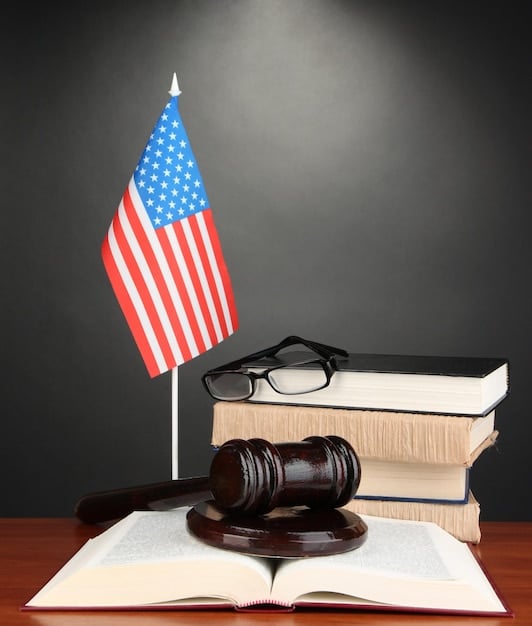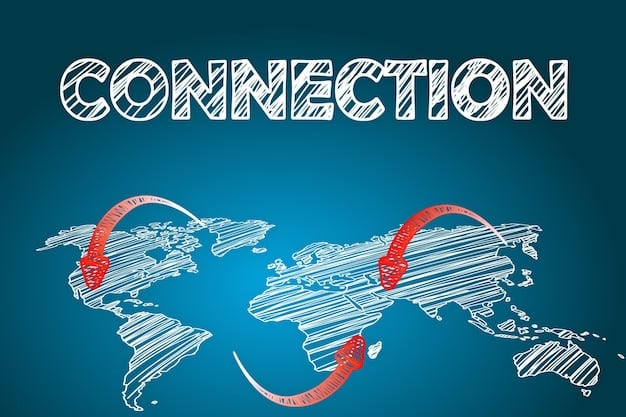How the U.S. Government Protects Intellectual Property Rights: Challenges & Solutions

How does the US government protect intellectual property rights, and what are the challenges? The U.S. government protects intellectual property through laws like patents, copyrights, and trademarks, but faces ongoing challenges, including digital piracy and international enforcement issues.
Intellectual property (IP) is the bedrock of innovation and creativity, fueling economic growth and societal advancement. But how does the US government protect intellectual property rights, and what are the challenges it faces in the digital age? Understanding these protections is vital for creators, businesses, and consumers alike. This article delves into the mechanisms and complexities of IP protection in the United States.
From patents and copyrights to trademarks and trade secrets, the U.S. government employs various tools to safeguard IP. Yet, enforcing these rights in a rapidly evolving technological landscape presents numerous hurdles. Let’s explore how the US government protects intellectual property rights and the significant challenges that persist.
Understanding Intellectual Property Rights in the US
Intellectual property rights are legal rights protecting creations of the mind. These rights grant creators exclusive control over the use of their inventions, designs, and artistic works. In the United States, these rights are primarily protected through patents, copyrights, trademarks, and trade secrets.
Types of Intellectual Property Rights
Each type of intellectual property right serves a distinct purpose. Patents protect inventions, copyrights protect original works of authorship, trademarks protect brand names and logos, and trade secrets protect confidential business information.
- Patents: Protect new and useful inventions, granting the inventor the right to exclude others from making, using, or selling the invention for a certain period.
- Copyrights: Protect original works of authorship, including literary, dramatic, musical, and certain other intellectual works. Copyright protection grants the author exclusive rights to reproduce, distribute, perform, and display the work.
- Trademarks: Protect brand names and logos used to identify and distinguish goods or services of one party from those of others.
- Trade Secrets: Protect confidential business information that gives a business a competitive edge. Unlike patents, copyrights, and trademarks, trade secrets are not registered with the government.
These varied protections collectively ensure that creators and innovators can reap the rewards of their efforts, fostering a vibrant ecosystem of innovation and creativity.

How Does the US Government Protect Intellectual Property Rights?
The U.S. government employs a multi-faceted approach to protect intellectual property rights. This involves legislative actions, judicial enforcement, and administrative measures.
Congress has enacted various laws, such as the Patent Act, the Copyright Act, and the Trademark Act, to define and protect these rights. These laws outline the scope of protection, the duration of rights, and the remedies available for infringement.
Agencies Involved in IP Protection
Several federal agencies play a crucial role in protecting intellectual property rights. The United States Patent and Trademark Office (USPTO) grants patents and registers trademarks. The U.S. Copyright Office registers copyrights. Additionally, agencies like the Department of Justice and U.S. Customs and Border Protection enforce IP laws.
- USPTO: Examines patent applications and registers trademarks, providing inventors and businesses with legal protection for their inventions and brands.
- U.S. Copyright Office: Registers copyright claims, maintaining a public record of copyright ownership and providing legal recourse for copyright infringement.
- Department of Justice: Prosecutes criminal violations of IP laws, such as counterfeiting and piracy.
- U.S. Customs and Border Protection: Enforces IP laws at U.S. borders, preventing the importation of counterfeit and pirated goods.
The combined efforts of these agencies, alongside the federal court system, ensure a comprehensive framework for intellectual property protection in the United States.
Key Challenges in Protecting Intellectual Property
Despite the robust legal framework, several challenges persist in protecting intellectual property today. These challenges range from digital piracy to international enforcement issues.
One of the most significant challenges is the pervasive nature of digital piracy. The ease with which digital content can be copied and distributed online makes it difficult to enforce copyright laws effectively.
Digital Piracy and Copyright Infringement
The widespread availability of pirated content on the internet poses a significant threat to copyright owners. Illegal downloads and streaming services undermine legitimate markets and reduce incentives for creators.
- Sophisticated Piracy Networks: Organized groups distribute copyrighted material on a large scale, using advanced technologies to evade detection.
- User Behavior: Many individuals engage in casual piracy, often unaware of the legal consequences or the impact on creators.
- Enforcement Difficulties: Tracking down and prosecuting online pirates can be challenging due to jurisdictional issues and the anonymity afforded by the internet.
Addressing digital piracy requires a combination of legal measures, technological solutions, and public awareness campaigns.
The Role of International Agreements
International agreements play a vital role in protecting intellectual property rights on a global scale. These agreements establish standards for IP protection and provide mechanisms for resolving disputes between countries.
The United States is a party to several international IP treaties, including the Paris Convention for the Protection of Industrial Property, the Berne Convention for the Protection of Literary and Artistic Works, and the Agreement on Trade-Related Aspects of Intellectual Property Rights (TRIPS).
Enforcing IP Rights Across Borders
Enforcing intellectual property rights internationally can be complex due to differences in legal systems and cultural norms. However, international agreements provide a framework for cooperation and mutual recognition of IP rights.
- TRIPS Agreement: Sets minimum standards for IP protection that member countries must implement in their national laws.
- Bilateral Agreements: The U.S. enters into bilateral agreements with individual countries to enhance IP protection and enforcement.
- International Cooperation: Cooperation between law enforcement agencies and customs authorities is essential for combating cross-border IP crimes.

By participating in these agreements, the U.S. seeks to promote strong IP protection standards worldwide and ensure that its creators and businesses can compete fairly in the global marketplace.
Balancing Innovation and Access
A key challenge in protecting intellectual property is striking the right balance between incentivizing innovation and ensuring access to knowledge and information. Overly broad or restrictive IP rights can stifle innovation and limit access to essential goods and services.
For example, in the pharmaceutical industry, patent protection is essential for encouraging investment in research and development of new drugs. However, it can also lead to high drug prices that limit access for patients who cannot afford them. How does the US government protect intellectual property rights, and what are the challenges related to balancing these competing interests?
Promoting Competition and Public Welfare
Policymakers must carefully consider the potential impact of IP laws on competition and public welfare. Measures such as compulsory licensing and fair use provisions can help promote access to knowledge and information while still protecting the rights of creators.
- Compulsory Licensing: Allows governments to authorize the use of patented inventions without the patent holder’s consent, typically in cases of public health emergencies or national security concerns.
- Fair Use: Permits the use of copyrighted material for certain purposes, such as criticism, commentary, news reporting, teaching, scholarship, and research, without infringing the copyright owner’s rights.
- Promoting Open Innovation: Encouraging open-source software development and collaborative research models can foster innovation while ensuring broad access to knowledge.
Finding the right balance requires a nuanced approach that considers the specific context and the potential impact on all stakeholders.
Future Trends in Intellectual Property Protection
The landscape of intellectual property protection is constantly evolving. Emerging technologies and changing business models are creating new challenges and opportunities. Artificial intelligence (AI), blockchain, and the metaverse are just a few of the trends that are reshaping the IP landscape.
As AI becomes more prevalent, questions arise about the patentability of AI-generated inventions and the copyright ownership of AI-created works. Blockchain technology offers new ways to track and protect digital assets, while the metaverse presents new challenges for enforcing IP rights in virtual environments. How does the US government protect intellectual property rights, and what are the challenges as technology continues to advance?
Adapting to these trends will require ongoing dialogue between policymakers, industry stakeholders, and the public. By proactively addressing these challenges, the U.S. can ensure that its intellectual property system remains effective in promoting innovation and creativity in the 21st century.
| Key Point | Brief Description |
|---|---|
| 🛡️ IP Rights | Legal rights protecting creations of the mind like inventions & artistic works. |
| 🌐 International Agreements | Standards for global IP protection and dispute resolution. |
| ⚖️ Innovation Balance | Balancing incentives for innovation with public access to knowledge. |
| 🧑⚖️ Digital Piracy | Online distribution challenges the enforcement of copyright laws. |
Frequently Asked Questions
The main types include patents for inventions, copyrights for original works, trademarks for brand names, and trade secrets for confidential business info, each offering unique protections and durations.
The USPTO protects IP by granting patents for new inventions and registering trademarks, providing legal rights to exclude others from using them without permission, fostering innovation.
The government uses laws like the Digital Millennium Copyright Act, but online piracy’s ease and anonymity complicate detection and prosecution, demanding adaptive protective strategies.
International agreements harmonize IP standards and provide mechanisms for cross-border enforcement, ensuring creators’ rights are respected globally, promoting fair competition and innovation.
The government uses tools like fair use and compulsory licensing, yet faces challenges ensuring widespread access to essential goods like medicine without undermining innovation incentives.
Conclusion
Protecting intellectual property rights is fundamental to fostering innovation and economic growth in the United States. The U.S. government employs a comprehensive framework of laws, agencies, and international agreements to safeguard these rights. How does the US government protect intellectual property rights, and what are the challenges for the future?
While significant progress has been made, ongoing challenges such as digital piracy and the need to balance innovation with access require continued vigilance and adaptation. By addressing these challenges proactively, the U.S. can ensure that its intellectual property system remains effective in the digital age.





